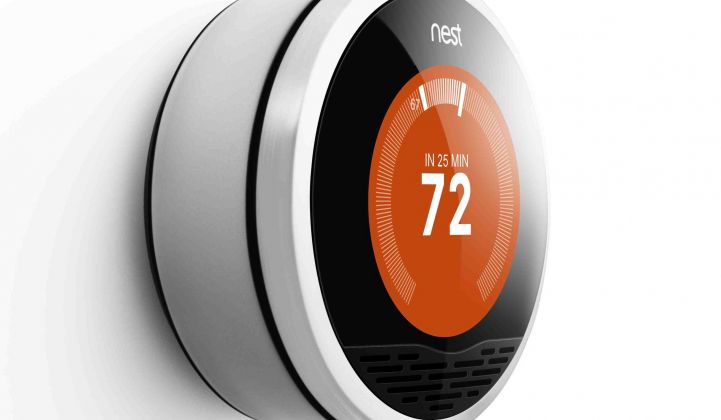Google’s $3.2 billion purchase of Nest in January was about a lot more than a cool-looking thermostat.
Google’s move combines the world’s most powerful marketing company with some of the world’s best product designers -- Nest’s co-founders are former Apple iGeniuses -- to shake up an industry that’s long struggled with marketing, consumer trust and user-friendly design. For utilities, the Google/Nest combination represents a promising inflection point on multiple levels.
Google Nest represents new approaches to addressing the knotty problems facing some of the industry’s most important initiatives, such as demand response programs and smart grid. As Nest co-founder (and Apple iPod designer) Tony Fadell recently told Fast Company, “We’re not just a beautiful-looking connected device that helps [consumers]. We’re a beautiful-looking connected device that also works with [consumers’] utilities."
Nest has already rolled out a limited, utility-facing proof of concept with Nest Energy Services that will soon be available to retail customers of a handful of NRG Energy subsidiaries, including National Grid, Green Mountain Energy and Reliant, among others. Retail customers who have Nest thermostats can join peak-load demand response programs that let utilities control heating and cooling through Nest, saving consumers money. A next step, Fadell says, will be monthly budgeting, where consumers tell Nest how much they want to spend on energy each month, and the thermostat does the rest.
Fadell claims Nest can deliver “all the consumer benefits of the smart grid today, without the smart grid,” which isn’t now possible, but is an intriguing stretch goal for the future. Nest -- or similar technologies -- will help deliver the full benefits of smarter grids when the data streaming from connected homes is translated by utility-side software into operational intelligence for the utility. Connected-home technology will deliver on its smarter-grid promise only when the value of smarter grids for both consumers and utilities are aligned.
Nest can leverage Google’s marketing capabilities to help utilities segment and understand their markets in deeper detail than ever before. This new, up-from-the-consumer, thermostat-by-thermostat process of trust-building will refine, amplify and deliver messages utilities have long tried, and often failed, to get across to consumers through the existing utility-down model.
But the transformational potential of Nest and similar products for utilities goes beyond marketing savvy and customer trust to something fundamental to the future: using technology on both the consumer side and the utility side to transform increasingly granular consumer-use and preference data into better utility strategy. Ever-smarter connected sensors in the home are simply better reporting tools than we have now. The true value lies in what utilities can do with the deeper, more detailed information they receive.
Companies that successfully automate, monitor and serve the connected home -- not just in the domain of heating and cooling, but also in security, entertainment, lighting, and others -- will have taken a giant step into an omniscience that can benefit consumers and utilities. Utilities can create tighter relationships with their retail customers by illuminating, in more detail than ever before, who they are, how they live, how they want to be talked to and how they spend.
The benefits for utilities will include improved customer retention, beefier bottom lines, better infrastructure ROI, more flexible and successful demand response programs, more accurate pricing and tighter adherence to energy efficiency regulatory requirements.
***
Clinton Davis, an energy and environmental systems engineer, is Vice President of Distribution and Smart Grid at Ventyx, an ABB company.



